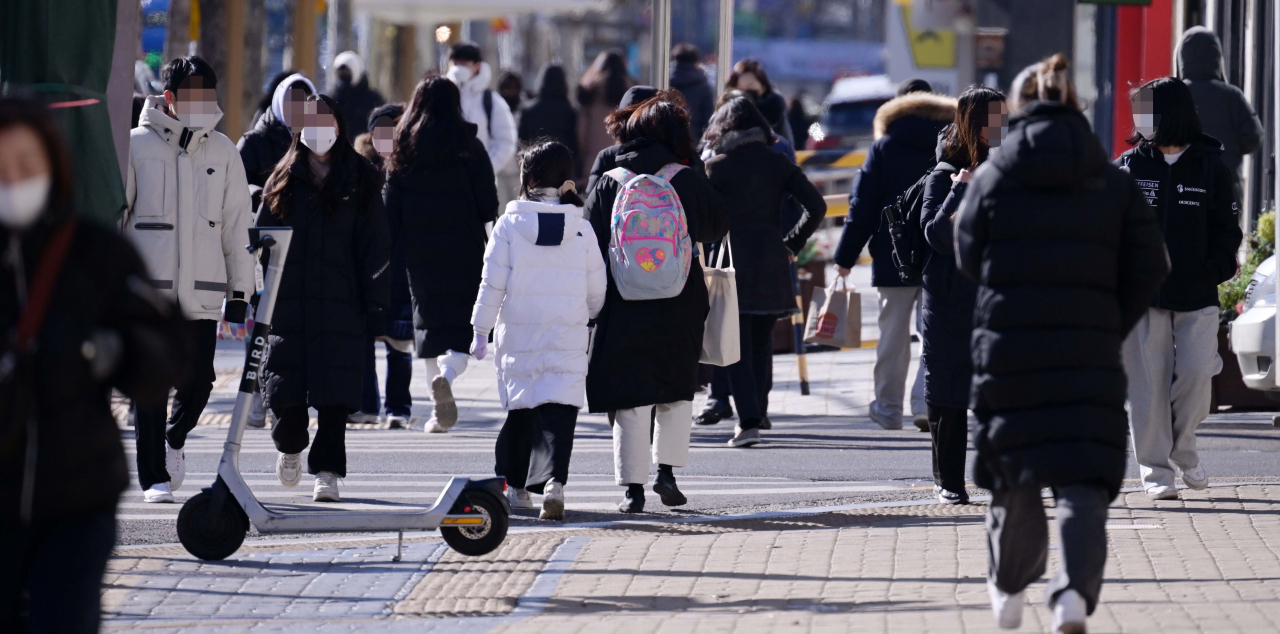 |
A mother and a daughter are seen on hagwon streets in Daechi-dong, a neighborhood in Seoul’s Gangnam-gu, also dubbed the “No. 1 avenue for private education.” (Lee Sang-sub/The Korea Herald) |
Koreans spent a record high of 26 trillion won ($20 billion) on private education in 2022, with spending on English being the highest, data from Statistics Korea and the Education Ministry showed Tuesday.
Last year’s out-of-school expenditure marked a 10.8 percent increase from 2021’s 23.4 trillion won, showing that obligations for students here extend beyond the school curriculum to hagwons, also known as cram schools that provide tailor-made lessons.
By subject, the average monthly spending on English was the highest at 123,000 won. Math and Korean language were the second and third highest, at 116,000 won and 34,000 won, respectively. Spending on social studies and science was 18,000 won each.
The data compiled by the two institutions were conducted from March to May and July to September last year, based on surveys of 74,000 elementary to high school students across 3,000 schools nationwide.
The average monthly expenditure on private education surged by 11.8 percent in 2022, reaching 410,000 won per student, the ministry said.
The ministry added that the monthly private education expense for high school students was 460,000 won, while it was 438,000 won and 372,000 for middle and elementary students, respectively. The data also showed that spending for students in Seoul and nearby metropolitan cities was more than 700,000 won per month.
Households whose average monthly income topped 8 million won spent 648,000 won on private education, while families earning less than 3 million won per month spent 178,000 won.
Double-income families spent the most on private education at 432,000 won per month, up 11.2 percent from the previous year. Single-income households with fathers as breadwinners spent 410,000 won, while those with mothers as the sole breadwinner spent 270,000 won per month.
As the financial burden is different for each household and causes educational inequality outside classrooms, the ministry said it would team up with provincial education offices to reduce education expenses for parents. It plans to map out the scheme in the first half of this year.
According to the ministry, students received private education to prepare in advance for school subjects, develop specialized skills and to prepare for admission to a good school. In particular, high school students received private education to prepare for Suneung, or the College Scholastic Ability Test.
The rise in attendance at private academies also came with eased social distancing rules that limited in-person participation.
In 2022, 78.3 percent of students in grades 1 to 12 received a private education, up 2.8 percent from the previous year. The figure was 85.2 percent for elementary students, 76.3 percent for middle schoolers and 66 percent for high school students.
Students engaged in private education for an average of 7.2 hours per week, up 0.5 hours compared to 2021. Students in middle and elementary school spent an average of 7.5 hours and 7.4 hours per week, respectively, while the weekly participation hours for high school students was 6.6 hours.







